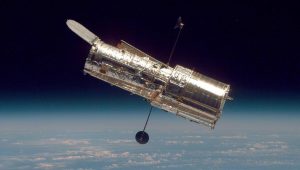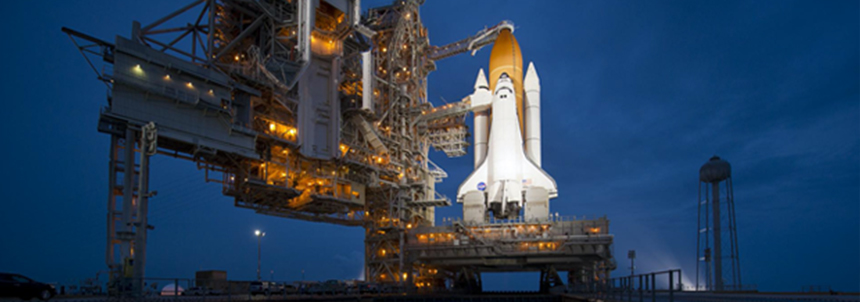
The Space Shuttle Era was marked by unprecedented access to low Earth orbit, with 135 missions over 30 years. Space Shuttles deployed satellites that are the foundation of modern communications and Geographic Information Systems (GIS) networks, opened a window to space by deploying and repairing the Hubble Space Telescope, enabled important new research, and were instrumental in construction of the International Space Station. The Shuttle Era also is marked by tragedies that took the lives of 14 astronauts and produced painful lessons learned that transformed NASA forever. The valuable information linked here is relevant and timeless. APPEL Knowledge Services, working with the NASA knowledge community, has created this resource to assist researchers, facilitators, and the technical workforce learn from NASA’s rich history.
NAVIGATE THE PAGE
|
Articles and Publications
 A Shuttle Program Legacy of Safety and Mission Assurance at JSC (NASA Only)
A Shuttle Program Legacy of Safety and Mission Assurance at JSC (NASA Only)
A presentation developed by the NASA Safety and Mission Assurance (SMA) organizations to share NASA’s legacy of safety protocols based on the lessons learned during the 30-year Space Shuttle Program. These practices can guide future projects and programs to minimize the risks of catastrophic failures.
 “Don’t Be the Victim of a Sharp Attack! Sharp Edges: Identifying, Mitigating and Preventing Risks” History Collection–Space Shuttle (NASA Only)
“Don’t Be the Victim of a Sharp Attack! Sharp Edges: Identifying, Mitigating and Preventing Risks” History Collection–Space Shuttle (NASA Only)
Learn about the mission-compromising dangers or sharp edges, which can be anywhere. Tips to remain cognizant of areas and materials with sharp edges and take proper precautions to protect yourself from a “sharp attack!”
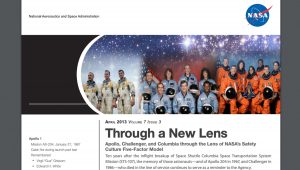 Five Factor Safety Culture Model (NASA Only)
Five Factor Safety Culture Model (NASA Only)
Informed by the tragedies of Columbia, Challenger, and Apollo 1—and in memory of the astronauts who died in the line of service—NASA has developed a safety culture model based on the five factors of flexibility, learning, reporting, justness, and engagement.
 History Collection–Space Shuttle
History Collection–Space Shuttle
This site includes an impressive and wide-ranging collection of information about all of the Space Shuttles, from mission goals to technical details about the orbiters, from diagrams to operational data books, and an impressive collection of images.
Hubble Space Telescope
Information about the crucial Space Shuttle servicing missions that saved the Hubble Space Telescope. Also, this page provides links to the National Archive for images taken during those shuttle missions.
 MSFC Library (NASA Only)
MSFC Library (NASA Only)
The MSFC Library curates collections of materials from various manned and unmanned space flight programs, including the Space Transportation System (STS). Archives include the “Rocketry Room” with unique documents for early STS propulsion system development.
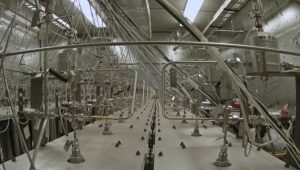 Return-to-Flight Testing for Space Shuttle (NASA Only)
Return-to-Flight Testing for Space Shuttle (NASA Only)
The White Sands Test Facility has been involved in Composite Overwrapped Pressure Vessel (COPV) testing for about 20 years and supported return-to-flight testing for the Space Shuttles, which contained as many as 24 COPVs. Learn how White Sands worked to increase understanding of the reliability numbers for the Shuttle’s COPVs.
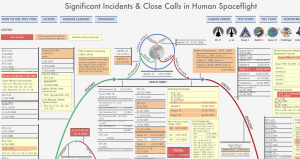 Significant Incidents & Close Calls in Human Spaceflight: EVA Operations
Significant Incidents & Close Calls in Human Spaceflight: EVA Operations
This interactive chart, with links to data, focuses on incidents and close calls during Extra Vehicular Activities (EVA), also known as spacewalks.
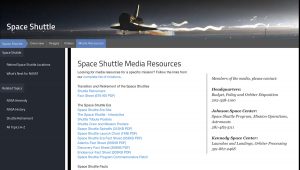 Space Shuttle Era Resources
Space Shuttle Era Resources
NASA’s Space Shuttle fleet — Columbia, Challenger, Discovery, Atlantis, and Endeavour — flew 135 missions, helped construct the International Space Station and inspired generations. The final Space Shuttle mission, STS-135, touched down on July 21, 2011. As humanity’s first reusable spacecraft, the Space Shuttle pushed the bounds of discovery ever further, requiring not only advanced technologies but the tremendous effort of a vast workforce.
 Space Shuttle and International Space Station
Space Shuttle and International Space Station
A comprehensive list of questions and answers about the Space Shuttle Program, including the role it played in the development of the International Space Station (ISS), the largest international scientific and technological endeavor ever undertaken.
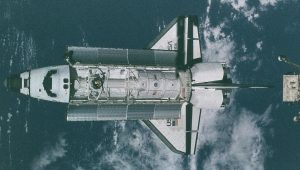 STRIVES Repository (NTRS and NTRS-R)
STRIVES Repository (NTRS and NTRS-R)
The STRIVES repository contains more than 3,400 NASA funded scientific and technical papers relating to the Space Shuttle program on a variety of topics, including solid rocket boosters, fused silica windows, and aerothermodynamic design.
Case Studies
 Down to the Wire: Space Shuttle mission STS-116
Down to the Wire: Space Shuttle mission STS-116
Examination of an incident during the Solid Rocket Booster (SRB) recovery for Space Shuttle mission STS-116, when an injury occurred on the retrieval ship MV Freedom Star. On Dec. 12, 2006, the ship was towing a booster into port when the tow wire jumped from its tow chute and struck a nearby crewman.
 Hit the Bricks: STS 124 Flame Trench Mishap
Hit the Bricks: STS 124 Flame Trench Mishap
“Flawless” was one description of the May 31, 2008 launch of the Space Shuttle Discovery on mission STS-124. So when the NASA safety team at Kennedy Space Center set out to inspect Launch Pad 39A following that launch, they were surprised to find the area littered with debris. Powerful exhaust from Discovery’s liftoff breached the flame trench wall at the base of the pad.
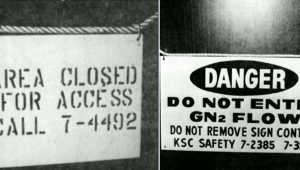 Tough Transitions- STS 1 Pre-flight Accident
Tough Transitions- STS 1 Pre-flight Accident
The Space Shuttle was in development in the early 1970s, and its initial test flight, STS-1, was more than two years behind schedule. As ground crews worked diligently to prepare for the launch, a group of technicians collapsed inside Columbia’s nitrogen-filled aft compartment after a countdown demonstration test on March 19, 1981.
 Vicious Cycle- The X-15 Mishap
Vicious Cycle- The X-15 Mishap
An examination of the accident that killed U.S. Air Force Major Mike Adams, who was piloting the North American X-15, called “the most successful research airplane in history,” when a drift in heading caused the aircraft to reenter the atmosphere perpendicular to its ballistic flight path and break apart at 62,000 feet.
Lessons Learned
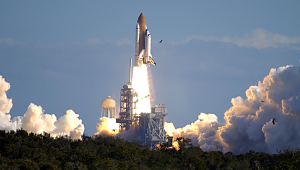 Apollo, Challenger, Columbia Lessons Learned Program
Apollo, Challenger, Columbia Lessons Learned Program
NASA’s Apollo, Challenger, Columbia Lessons Learned Program (ACCLLP) shares the difficult lessons of the past to help ensure future mission success.
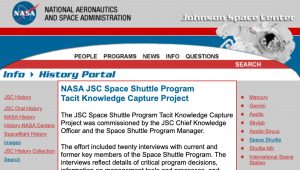 JSC Space Shuttle Program Tacit Knowledge Capture Project
JSC Space Shuttle Program Tacit Knowledge Capture Project
The JSC Space Shuttle Program Tacit Knowledge Capture Project includes twenty interviews with current and former key members of the Space Shuttle Program. The interviews reflect details of critical program decisions, information on management tools and processes, and lessons learned from areas of expertise.
 Learning from the Debris (NASA Only)
Learning from the Debris (NASA Only)
In this video, Mike Ciannilli, manager, Apollo, Challenger, Columbia Lessons Learned Program; Mike Leinbach, former space shuttle launch director; and Darren Cone, executive director, Center for the Advancement of Space Safety and Mission Assurance, discuss what the Columbia debris told investigators about the accident and what was learned by further studying these artifacts.
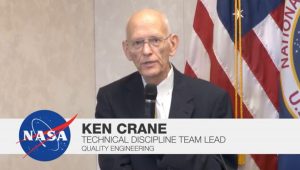 Lessons Learned in Independent Technical Authority (NASA Only)
Lessons Learned in Independent Technical Authority (NASA Only)
The independent Columbia Accident Investigation Board (CAIB) made numerous findings and recommendations. They included a recommendation that NASA establish a Technical Engineering Authority funded directly from NASA Headquarters, with no connection to, or responsibility for, schedule or program cost.
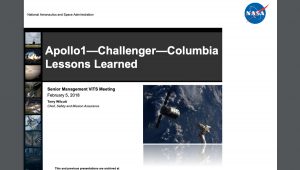 Safety Message: Apollo 1, Challenger, Columbia Lessons Learned
Safety Message: Apollo 1, Challenger, Columbia Lessons Learned
A presentation about the enduring lessons of Apollo1, Challenger, and Columbia and how to honor the lost crews by remembering, reviewing, and applying the hard-won lessons learned every day.
Videos and Images
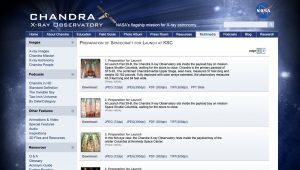 Chandra X-ray Observatory Prelaunch
Chandra X-ray Observatory Prelaunch
Pre-launch images of the Chandra X-ray Observatory, one of NASA’s “Great Observatories,” in Columbia’s Cargo Bay prior to launch.
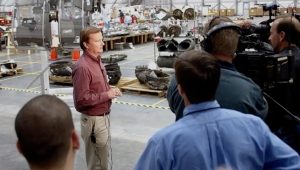 Columbia Reconstruction (NASA Only)
Columbia Reconstruction (NASA Only)
Mike Leinbach, former space shuttle launch director, led NASA’s reconstruction efforts after the loss of Columbia. In this video, he shares how the agency worked to piece together the recovered debris to learn exactly what happened during the accident.
 JSC Knowledge Online Leadership Videos (NASA Only)
JSC Knowledge Online Leadership Videos (NASA Only)
Training videos from classes conducted at JSC related to various programs and projects at JSC including the Space Shuttle.
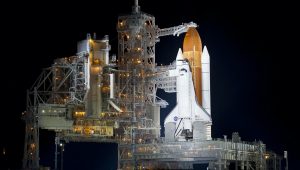 JSC Knowledge Online Training Videos (NASA Only)
JSC Knowledge Online Training Videos (NASA Only)
Training videos from classes conducted at JSC related to various programs and projects at JSC including Shuttle.
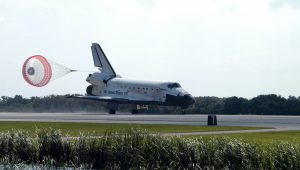 JSC Video Repository (NASA Only)
JSC Video Repository (NASA Only)
JSC’s archives of video documenting NASA programs, projects and events.
 Reconciling Perspectives: Space Shuttle Booster Motor Redesign
Reconciling Perspectives: Space Shuttle Booster Motor Redesign
In this Knowledge Byte, Paul Teehan — acting Chief Safety and Mission Assurance Officer, Multi-Program Science, Marshall Space Flight Center — discusses differing opinions on a design change for the space shuttle solid rocket boosters and how those opinions were ultimately reconciled.
 Space Shuttle Era Images
Space Shuttle Era Images
Stunning images of NASA’s Space Shuttle fleet — Columbia, Challenger, Discovery, Atlantis, and Endeavour — launching, landing, and working in space.
 Space Shuttle Era Videos
Space Shuttle Era Videos
Spectacular videos of NASA’s space shuttle fleet — Columbia, Challenger, Discovery, Atlantis and Endeavour — pushing the boundaries of discovery in low Earth orbit, returning to Earth, and ultimately moving to their final museum homes.
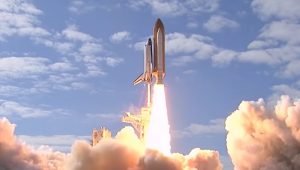 STS-129 HD Launch
STS-129 HD Launch
Video of the November 16, 2009 launch of Space Shuttle Atlantis. Its six-member crew began an 11-day delivery flight to the International Space Station with a 2:28 p.m. EST launch from NASA’s Kennedy Space Center in Florida. The Shuttle transported spare hardware to the outpost and returned astronaut Nicole Stott, who had spent nearly three months in space.
Space Shuttle Video Vault
An extensive collection of videos from the Shuttle Era, from Atlantis rolling to the launch pad, to fortifying the space station, to Discovery touching down, booster camera video, mission highlights, crew honors, and more.







